
Healthy Food Overall
We have all planned to eat better and make lifestyle changes at some point of time in our lives. Sometimes it is easier said than done, agree? It can take several attempts before we finally fall into the groove and begin to embrace the very changes we are planning to enjoy better health and overall well-being. To stay on track with our intentions, it is important that we identify what are the factors that throw us off the track, and make adaptations to suit our lifestyle. Eating healthy can be difficult if you are one of those people who loves fried foods, processed foods, and salt-laden snacks and frozen prepared foods. It is about changing your mindset, one step at a time. Do not make overambitious goals that are practically impossible to achieve. Instead plan on small changes, one item at a time. Introduce a new vegetable or fruit into your diet and if you first do not enjoy it, try using it in a different recipe which might be more appealing. It is not difficult to eat healthy food overall if you plan ahead and stay with your plan. Get the family involved as it is for the benefit...
We have all planned to eat better and make lifestyle changes at some point of time in our lives. Sometimes it is easier said than done, agree? It can take several attempts before we finally fall into the groove and begin to embrace the very changes we are planning to enjoy better health and overall well-being. To stay on track with our intentions, it is important that we identify what are the factors that throw us off the track, and make adaptations to suit our lifestyle. Eating healthy can be difficult if you are one of those people who loves fried foods, processed foods, and salt-laden snacks and frozen prepared foods. It is about changing your mindset, one step at a time. Do not make overambitious goals that are practically impossible to achieve. Instead plan on small changes, one item at a time. Introduce a new vegetable or fruit into your diet and if you first do not enjoy it, try using it in a different recipe which might be more appealing. It is not difficult to eat healthy food overall if you plan ahead and stay with your plan. Get the family involved as it is for the benefit of everyone around you and a healthy family is a happy family!
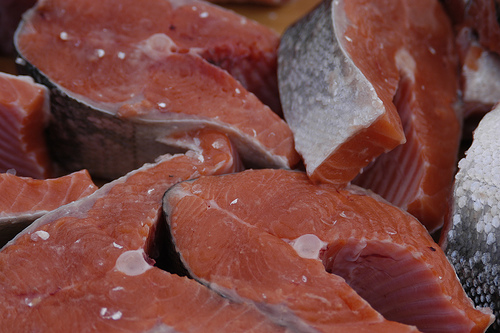
Salmon
Salmon is among the most popular fish due to its high content of omega-3 fatty acid. Salmon is also a source of high protein content that may provide protection for joint cartilage and prevent chronic inflammation. It is a useful source for eye health and preventing age-related macular degeneration. The omega-3s in salmon stimulate production of healthy skin and hair. Health benefits of salmon also include strengthening muscles and tissues due to their protein content. Cardiovascular health is improved with lowering of triglycerides due to the high omega-3 content, which also helps improve brain and neurological function. Most of the Atlantic salmon is farmed, whereas the Pacific salmon is wild caught. Canned salmon and smoked salmon have all the benefits of fresh or frozen salmon and can be substituted if necessary. The orange-to-red-pink color of salmon is due to the presence of carotenoid pigments in the flesh.
- Important notification about information and brand names used in this slideshow!
- Photo courtesy of Andrea Pokrzywinski by Flickr : www.flickr.com/photos/andreagp/1122613434/
- www.livestrong.com/article/545198-the-fit-fridge-10-foods-to-make-you-healthier/
- http://wildforsalmon.com/health-benefits/
- http://www.whfoods.com/genpage.php?tname=foodspice&dbid=104

Chia Seeds
Chia seeds date back in popularity to the days of the Aztecs. Chia seeds are a rich source of omega-3 fatty acids, protein, fiber, and antioxidants. Although chia seeds have been around for a long time, they have become popular in recent years and have found use in various food products including chia drinks, chia snacks, chia bars, and ground chia seeds. Unlike flax seeds which must be ground, chia seeds do not have to be ground. Nutritional experts suggest that chia seeds will replace the popular flax seeds due to their high omega-3 fatty acid content. You should restrict chia seed consumption to no more than one ounce a day due to its high fiber content, which is likely to cause indigestion and stomach upset in most people. Chia seeds keep you fuller longer and prevents overeating. When chia seeds become wet, they absorb the moisture and form a gelatinous covering which takes longer to digest. Chia seeds are recommended for pregnant women and children.
- Important notification about information and brand names used in this slideshow!
- Photo courtesy of Glenn by Flickr : www.flickr.com/photos/graibeard/4177919755/
- www.livestrong.com/article/545198-the-fit-fridge-10-foods-to-make-you-healthier/
- http://www.webmd.com/diet/features/truth-about-chia
- http://www.nytimes.com/2012/11/24/business/chia-seeds-gain-popularity-for-nutritional-benefits.html?_r=0
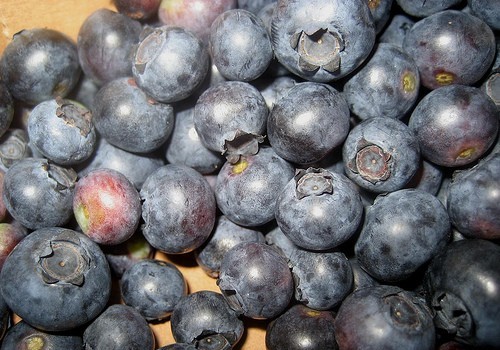
Blueberries; Raspberries
Berries are a powerhouse of nutrients, the most important of which are antioxidants. An antioxidant-rich diet is recommended for improving overall health, protecting your skin and hair, and prevention of chronic illnesses. Vitamin C, anthocyanins, and quercetin are only some of the powerful antioxidants present in most berries. The bright and vibrant colors of berries is due to the presence of anthocyanins. Blueberries originated in North America thousands of years ago, and widely used by Native Americans. Blueberries regulate hypertension, and is useful in the prevention of arthritis, memory loss, and eye problems. The nutritional value of raspberries far exceeds that of blueberries, and it has nearly double the fiber present in blueberries. The antioxidant capacity of raspberries is greater than strawberries, kiwis, broccoli, leeks, and apples.
- Important notification about information and brand names used in this slideshow!
- Photo courtesy of TheKarenD by Flickr : www.flickr.com/photos/karen_d/2685405502/
- www.livestrong.com/article/545198-the-fit-fridge-10-foods-to-make-you-healthier/
- http://www.eatingwell.com/nutrition_health/nutrition_news_information/the_total_body_benefits_of_berries
- http://www.joybauer.com/food-articles/berries.aspx
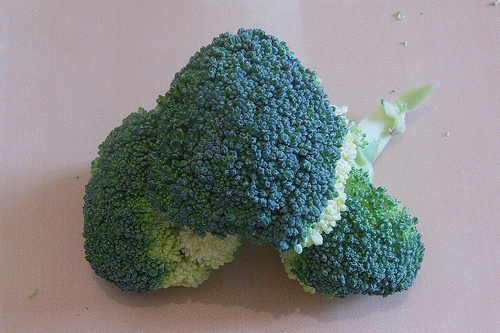
Broccoli
Broccoli is a cruciferous vegetable with disease preventing properties. It is a rich source of phytonutrients, vitamins A and C, folates, calcium, magnesium, selenium, zinc, and phosphorus. Health benefits of broccoli Broccoli lowers the risk of chronic inflammation and provides antioxidant nutrients, most important of which is vitamin C. Other antioxidants include vitamin E, manganese, and zinc. Broccoli enhances detoxification in the body. Broccoli's unique combination of antioxidant, anti-inflammatory, and detoxification properties make it perfect for cancer prevention. Research on broccoli has shown it is strongest in decreased risk of prostate cancer, colon cancer, breast cancer, bladder cancer, and ovarian cancer. Broccoli enhances function of various body organs and systems including cardiovascular system, digestive system, eye health, and skin support. Healthy way of cooking broccoli Cook broccoli no longer than five minutes to retain its nutrients. When overcooked, broccoli loses its nutrients and flavor. The fibrous stems take longer to cook, and therefore can be prepped and cooked for a few minutes before adding the florets. The stems can also be slit lengthwise to minimize cooking time. Steamed broccoli retains most nutrients. Try to include broccoli in your diet 2-3 times per week.
- Important notification about information and brand names used in this slideshow!
- Photo courtesy of Richard North by Flickr : www.flickr.com/photos/richardnorth/7179300682/
- www.livestrong.com/article/545198-the-fit-fridge-10-foods-to-make-you-healthier/
- http://www.whfoods.com/genpage.php?tname=foodspice&dbid=9
- http://www.naturalnews.com/039187_broccoli_health_benefits_risk_factors.html

Kimchee
Kimchi or kimchee is a traditional fermented Korean dish made with vegetables and seasonings. Traditionally kimchee was prepared in jars and fermented underground for several months. Kimchee is the national dish of Korea. The most common vegetables used are cabbage, radish, cucumber, and scallions. Kimchee is used in dishes such as kimchee rice, kimchee pancakes, and kimchee soup. Koreans eat nearly 40 pounds of kimchee each year. Kimchee is a healthy food laden with nutrients such as vitamins A, B, and C. Lactobacilli bacteria found in fermented foods is also found in kimchee. Health benefits of kimchee Kimchee reduces body weight, maintains blood pressure, inhibits allergies, and atherosclerosis. In addition, kimchee is known to inhibit autoimmune diseases. It has proven anti-cancer properties, and antimicrobial effects of common pathogens of the gastrointestinal tract. Kimchee can be prepared at home by fermenting vegetables such as cabbage, daikon, carrots, etc. with garlic, ginger, and green onion.
- Important notification about information and brand names used in this slideshow!
- Photo courtesy of Min Lee by Flickr : www.flickr.com/photos/mlee/2740093163/
- www.livestrong.com/article/545198-the-fit-fridge-10-foods-to-make-you-healthier/
- http://perfecthealthdiet.com/2013/03/shou-chings-moms-kimchi/

Cottage Cheese
Cottage cheese is a cheese curd product that is high in a dairy protein called casein. It is recommended for weight loss because it is a low-fat and low-sugar product. It is low in calories and rich in riboflavin, which is essential to maintain healthy eyes and skin. Cottage cheese is rich in phosphorus and important for strong bones and teeth. A 100 g serving of plain cottage cheese has approximately 91 calories, 2.3 grams of fat, 6 grams of carbohydrates, and 11.3 grams of protein. Cottage cheese is rich in live cultures or probiotics, which help maintain good bacteria in our digestive tract to promote healthy digestion. Cottage cheese can be a healthy part of weight loss plan due to its low-calorie content. Cottage cheese can be eaten as a snack or used in cooking. Cottage cheese can be substituted in place of other cheeses in regular meals. Consider using cottage cheese with greens, or mix cottage cheese with canned tuna for a tuna melt.
- Important notification about information and brand names used in this slideshow!
- Photo courtesy of greckor by Flickr : www.flickr.com/photos/gregcutler/42333688/
- www.livestrong.com/article/545198-the-fit-fridge-10-foods-to-make-you-healthier/
- http://healthyeating.sfgate.com/cottage-cheese-healthy-eat-1575.html
- http://www.weightloss.com.au/articles/healthy-diets/cottage-cheese.html
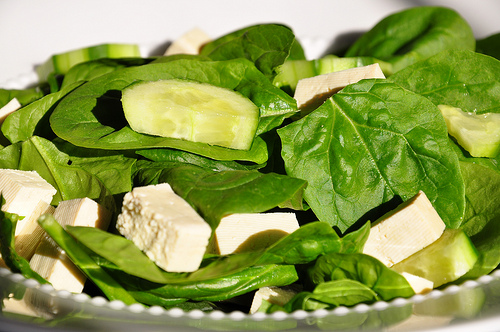
Spinach
Spinach is the most popular leafy green vegetable because it is a functional food with numerous nutritional components including different vitamins and minerals, ranging from iron to vitamin A. Spinach is very low in calories with only 23 calories for 100 g of raw spinach. It is rich in fiber and contains nearly 25% of the daily recommended intake of iron, which is essential for red blood cell production and cellular metabolism. Spinach is rich in vitamins like vitamin A, vitamin C, lutein, zea-xanthin and beta-carotene. Zea-xanthin is an important carotenoid that helps in prevention of age-related macular degeneration in the elderly. Spinach also contains B-complex vitamins such as vitamin-B6, vitamin B1, riboflavin, folates, and niacin. Spinach leaves are a great source of vitamin K, 100 g of fresh spinach providing more than the daily recommended dose of vitamin K. Vitamin K is important in maintaining the bone mass by promoting bone-building activity in the bone. Vitamin C is found in spinach as well. Spinach is rich in minerals like potassium, manganese, magnesium, copper and zinc, which are necessary for maintaining and regulating the function of several organs in the body. It is also rich source of omega-3 fatty acids. ...
Spinach is the most popular leafy green vegetable because it is a functional food with numerous nutritional components including different vitamins and minerals, ranging from iron to vitamin A. Spinach is very low in calories with only 23 calories for 100 g of raw spinach. It is rich in fiber and contains nearly 25% of the daily recommended intake of iron, which is essential for red blood cell production and cellular metabolism. Spinach is rich in vitamins like vitamin A, vitamin C, lutein, zea-xanthin and beta-carotene. Zea-xanthin is an important carotenoid that helps in prevention of age-related macular degeneration in the elderly. Spinach also contains B-complex vitamins such as vitamin-B6, vitamin B1, riboflavin, folates, and niacin. Spinach leaves are a great source of vitamin K, 100 g of fresh spinach providing more than the daily recommended dose of vitamin K. Vitamin K is important in maintaining the bone mass by promoting bone-building activity in the bone. Vitamin C is found in spinach as well. Spinach is rich in minerals like potassium, manganese, magnesium, copper and zinc, which are necessary for maintaining and regulating the function of several organs in the body. It is also rich source of omega-3 fatty acids. Spinach is a versatile green that can be used raw in salads and dishes, or cooked in different ways that include stews, curries, soups, and pasta.
- Important notification about information and brand names used in this slideshow!
- Photo courtesy of vmiramontes by Flickr : www.flickr.com/photos/vmiramontes/4570693417/
- www.livestrong.com/article/545198-the-fit-fridge-10-foods-to-make-you-healthier/
- http://www.nutrition-and-you.com/spinach.html
- http://www.fitday.com/fitness-articles/nutrition/healthy-eating/the-nutritional-food-value-of-spinach.html#b
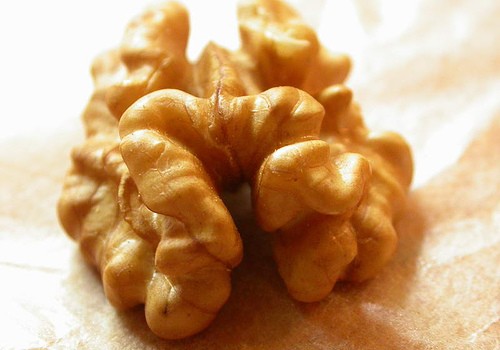
Walnuts
Walnuts have been eaten for thousands of years because of their high nutritional content and health benefits. Walnuts belong to the tree nut family that include Brazil nuts, cashew nuts, hazelnuts, macadamia nuts, pecans, and pine nuts. To get the maximum benefit of walnuts, a daily dose of one ounce walnuts is sufficient. One ounce of walnuts is about 7 shelled walnuts, which are a rich source of monounsaturated fatty acids (MUFA) and omega-3 fatty acids. Walnuts contain more antioxidants than over 1000 foods and is second only to blackberries. Antioxidants fight molecules called free radicals, which can accelerate aging and cardiovascular disease. Walnuts possess anti-cancer benefits due to the antioxidant and anti-inflammatory nutrients. Prostate cancer and breast cancer are the most often studied types of cancer with respect to walnut consumption, which is fairly reduced by walnut consumption. Walnuts contain alpha-linolenic acid or ALA, which is an omega-3 fatty acid similar to those found in heart-smart fish sych as mackerel, sardines, and salmon. ALA has a number of heart-healthy benefits that include the reduction of sudden death from dangerous abnormal heart rhythms. Walnuts are used in cooking and baking, and popularly used as a garnish in salads...
Walnuts have been eaten for thousands of years because of their high nutritional content and health benefits. Walnuts belong to the tree nut family that include Brazil nuts, cashew nuts, hazelnuts, macadamia nuts, pecans, and pine nuts. To get the maximum benefit of walnuts, a daily dose of one ounce walnuts is sufficient. One ounce of walnuts is about 7 shelled walnuts, which are a rich source of monounsaturated fatty acids (MUFA) and omega-3 fatty acids. Walnuts contain more antioxidants than over 1000 foods and is second only to blackberries. Antioxidants fight molecules called free radicals, which can accelerate aging and cardiovascular disease. Walnuts possess anti-cancer benefits due to the antioxidant and anti-inflammatory nutrients. Prostate cancer and breast cancer are the most often studied types of cancer with respect to walnut consumption, which is fairly reduced by walnut consumption. Walnuts contain alpha-linolenic acid or ALA, which is an omega-3 fatty acid similar to those found in heart-smart fish sych as mackerel, sardines, and salmon. ALA has a number of heart-healthy benefits that include the reduction of sudden death from dangerous abnormal heart rhythms. Walnuts are used in cooking and baking, and popularly used as a garnish in salads.
- Important notification about information and brand names used in this slideshow!
- Photo courtesy of Ioan Sameli by Flickr : www.flickr.com/photos/biwook/141005779/
- www.livestrong.com/article/545198-the-fit-fridge-10-foods-to-make-you-healthier/
- http://www.webmd.com/heart-disease/news/20041110/walnuts-are-heart-smart
- http://www.whfoods.com/genpage.php?tname=foodspice&dbid=99

Omega-3 Eggs
Omega-3 eggs are ordinary eggs enriched by feeding chickens a diet rich in omega-3. Free-range eggs need not necessarily be omega-3 eggs. Docosahexaenoic acid (DHA) is vital for the growth and functional development of an infant's brain. It is also required for maintaining normal brain function in adults. DHA in the diet improves learning ability. The brain absorbs DHA in preference to other fatty acids. A single omega-3 egg can contain up to 150 milligrams of DHA, an omega-3 fat that is essential for the optimal function of the brain. A study was conducted by Swedish researchers to evaluate the effects of consumption of standard eggs and omega-3 enriched eggs on lipoproteins, glucose and inflammation markers. They found that the addition of one regular egg per day to the normal diet had no negative impact on blood lipids or inflammation markers. However, consumption of omega-3 enriched eggs resulted in higher levels of apolipoprotein (ApoA1), lower ApoB/ApoA1 ratio, and lower plasma glucose. In previous studies, these effects have been associated with a lower risk for cardiovascular mortality and diabetes. Omega-3 eggs can be used just as ordinary eggs are used in everyday foods...
Omega-3 eggs are ordinary eggs enriched by feeding chickens a diet rich in omega-3. Free-range eggs need not necessarily be omega-3 eggs. Docosahexaenoic acid (DHA) is vital for the growth and functional development of an infant's brain. It is also required for maintaining normal brain function in adults. DHA in the diet improves learning ability. The brain absorbs DHA in preference to other fatty acids. A single omega-3 egg can contain up to 150 milligrams of DHA, an omega-3 fat that is essential for the optimal function of the brain. A study was conducted by Swedish researchers to evaluate the effects of consumption of standard eggs and omega-3 enriched eggs on lipoproteins, glucose and inflammation markers. They found that the addition of one regular egg per day to the normal diet had no negative impact on blood lipids or inflammation markers. However, consumption of omega-3 enriched eggs resulted in higher levels of apolipoprotein (ApoA1), lower ApoB/ApoA1 ratio, and lower plasma glucose. In previous studies, these effects have been associated with a lower risk for cardiovascular mortality and diabetes. Omega-3 eggs can be used just as ordinary eggs are used in everyday foods.
- Important notification about information and brand names used in this slideshow!
- Photo courtesy of NYCandre by Flickr : www.flickr.com/photos/nycandre/4646670531/
- www.livestrong.com/article/545198-the-fit-fridge-10-foods-to-make-you-healthier/
- http://wholehealthsource.blogspot.com/2009/11/omega-3-eggs.html
- http://www.nationalegg.ca/omega3.php
- http://www.ncbi.nlm.nih.gov/pubmed/18991244



























Your thoughts on this
Loading...